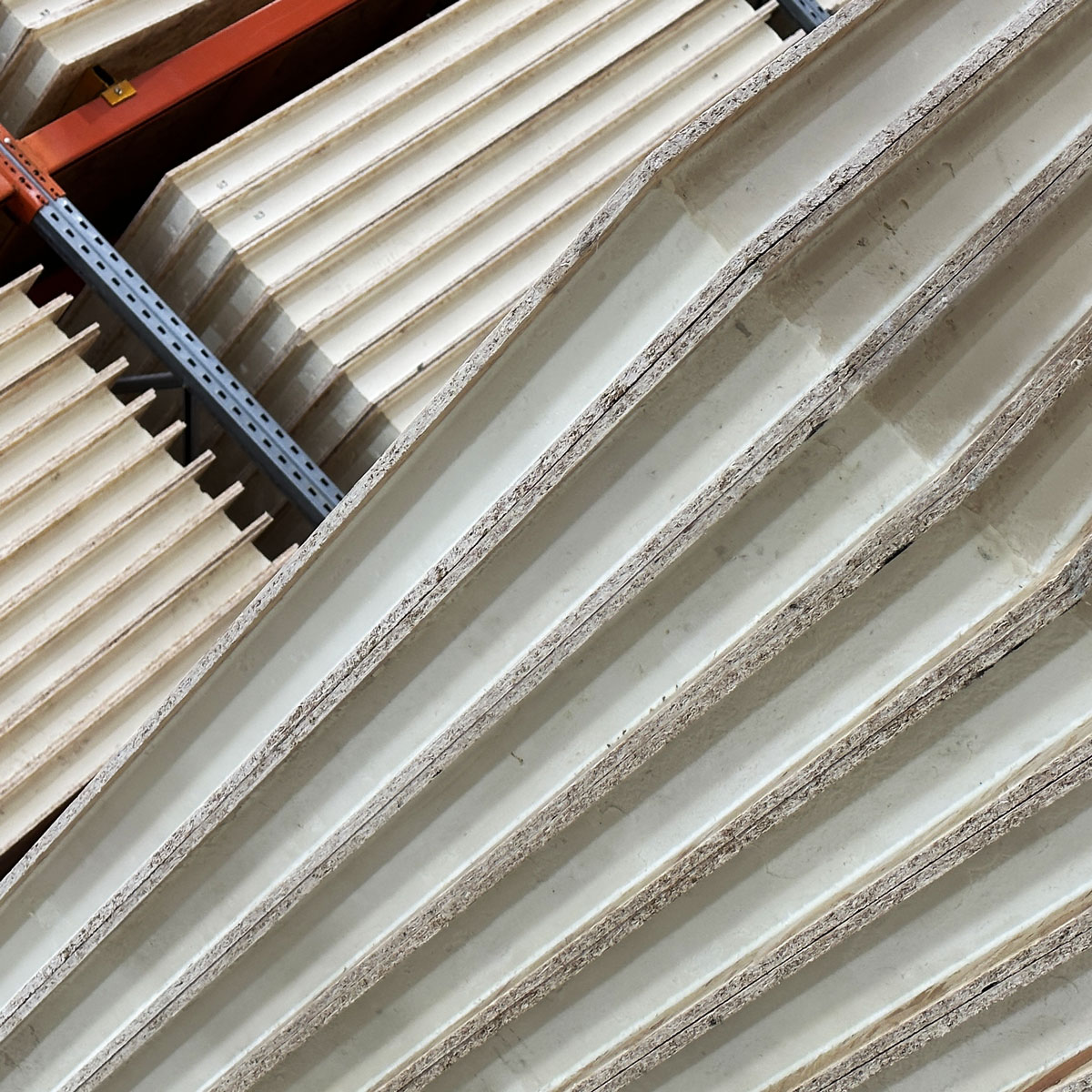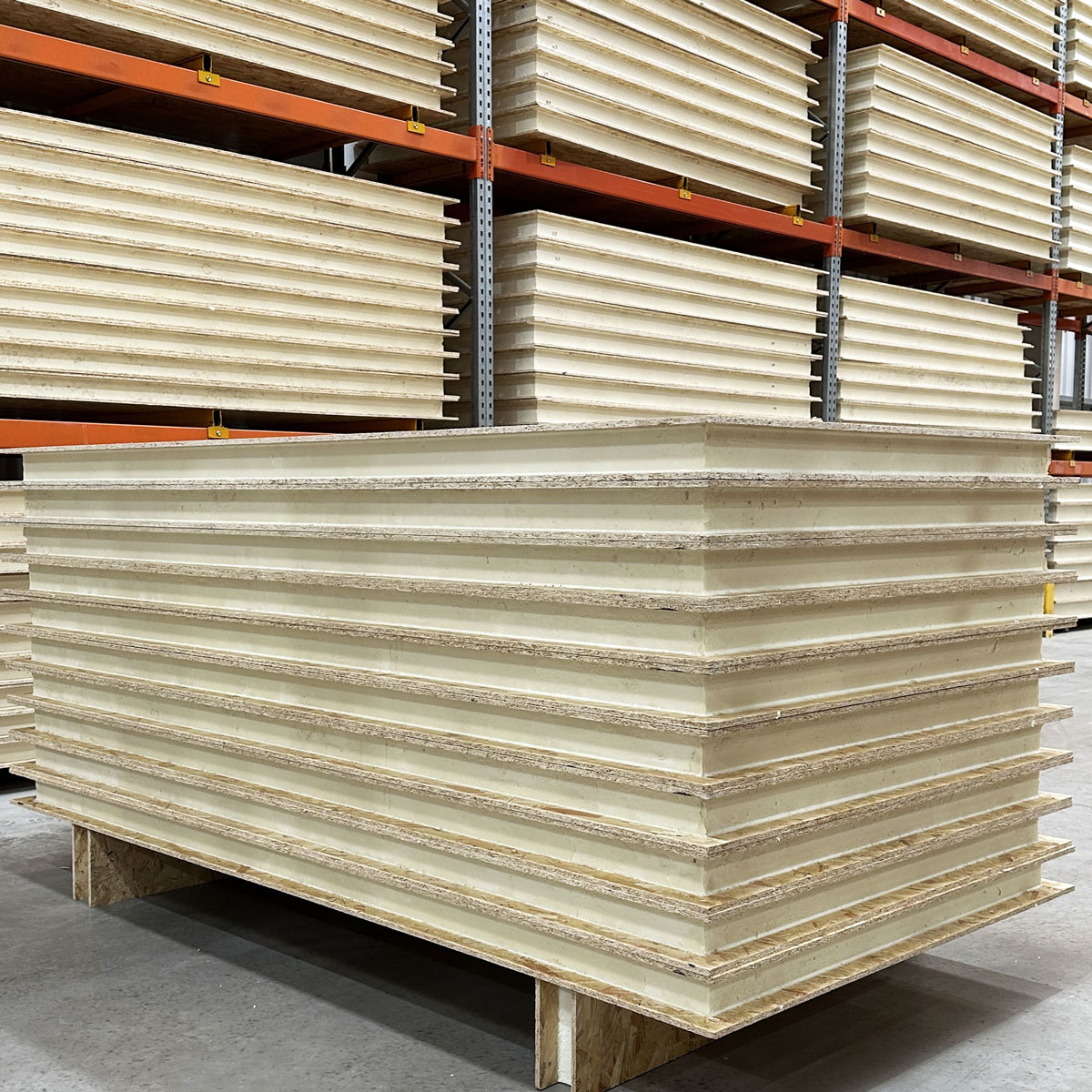Are you dreaming of a home that is energy-efficient, eco-friendly, and built to last? Look no further. In this comprehensive guide, we will introduce you to the world of Structural Insulated Panels (SIPs) and explore the numerous benefits they offer for building your dream home.
SIPs are revolutionising the construction industry and becoming increasingly popular among homeowners, architects, and builders. Combining insulation and structural components into a single panel, SIPs provide excellent thermal performance, superior strength, and exceptional energy efficiency.
What are Structural Insulated Panels (SIPs)?
Structural Insulated Panels, or SIPs, are a type of building material that consist of a core insulation sandwiched between two layers of structural boards. The core insulation is typically made of expanded polystyrene (EPS), polyurethane foam, or polyisocyanurate foam, which provides excellent insulation properties. The structural boards, usually made of oriented strand board (OSB), plywood, or fiber cement, provide strength and rigidity to the panel.
SIPs are manufactured in a controlled factory environment, ensuring consistent quality and precision. They are available in various sizes and thicknesses, making them suitable for different construction applications, from walls and roofs to floors and foundations. SIPs can be customized according to specific design requirements, allowing for flexibility and versatility in construction projects.
Advantages of using SIPs in construction
When it comes to building your dream home, SIPs offer a multitude of advantages over traditional building methods. Let’s explore some of the key benefits you can enjoy by using SIPs in your construction project.
Energy efficiency of SIPs
One of the major advantages of SIPs is their exceptional energy efficiency. The combination of the core insulation and the airtightness of the panels results in a highly insulated building envelope. This means reduced heat loss in winter and reduced heat gain in summer, leading to significant energy savings throughout the year.
SIPs have a high thermal resistance, or R-value, which measures the ability of a material to resist heat flow. The R-value of SIPs can range from R-4 to R-30, depending on the thickness and type of insulation used. This high R-value ensures that your home remains comfortable and energy-efficient, regardless of the outside temperature.
Additionally, SIPs minimize thermal bridging, which occurs when there is a break in the insulation layer, allowing heat to transfer from the inside to the outside. The continuous insulation provided by SIPs eliminates thermal bridging, further enhancing energy efficiency.
Cost savings with SIPs
While SIPs may have a higher upfront cost compared to traditional building materials, they offer significant long-term cost savings. The energy efficiency of SIPs translates into reduced energy consumption and lower utility bills. Over time, the savings on heating and cooling costs can offset the initial investment in SIPs.
Moreover, the construction process using SIPs is faster and more efficient compared to traditional building methods. Since SIPs are prefabricated in a factory, they can be quickly and easily assembled on-site, reducing labor costs and construction time. This accelerated construction timeline also means less time spent on the job site, minimizing the risk of weather-related delays and other potential setbacks.
Durability and strength of SIPs
SIPs are known for their exceptional durability and strength. The combination of the structural boards and the core insulation creates a panel that is highly resistant to bending, warping, and settling. This makes SIPs particularly well-suited for regions prone to earthquakes, hurricanes, and other extreme weather conditions.
The strength of SIPs also allows for wider spans and larger open spaces, eliminating the need for interior load-bearing walls and providing greater design flexibility. With SIPs, you can create open floor plans and expansive living areas, enhancing the aesthetics and functionality of your home.
Environmental benefits of building with SIPs
If you’re looking for an eco-friendly building solution, SIPs are the way to go. The core insulation used in SIPs is made from recycled materials and is free of harmful chemicals such as CFCs and HCFCs, making SIPs a sustainable choice for environmentally conscious homeowners.
SIPs also contribute to reduced greenhouse gas emissions by minimizing energy consumption. The energy-efficient properties of SIPs reduce reliance on heating and cooling systems, resulting in a smaller carbon footprint. In addition, the airtightness of SIPs prevents drafts and air leakage, improving indoor air quality and reducing the need for artificial ventilation systems.
Design flexibility with SIPs
Gone are the days of limited design options when using SIPs. These versatile panels can be easily integrated into various architectural styles, from modern and contemporary to traditional and rustic. SIPs can be customized to achieve different finishes, textures, and appearances, allowing for endless design possibilities.
The structural strength of SIPs also enables innovative and creative designs. With SIPs, you can incorporate large windows, soaring ceilings, and unique shapes without compromising on structural integrity. Whether you envision a sleek and minimalist home or a cozy and inviting retreat, SIPs can bring your design dreams to life.
Installation process for SIPs
The installation process for SIPs is straightforward and efficient. The panels are manufactured to precise measurements and specifications, ensuring a perfect fit during assembly. SIPs are typically delivered to the construction site in pre-cut and labeled panels, ready for installation.
To install SIPs, the panels are lifted into place and secured together using specialized connectors and adhesives. The joints between the panels are sealed with foam or tape to create an airtight and moisture-resistant barrier. Once the panels are in place, other construction elements, such as windows, doors, and electrical wiring, can be easily integrated into the SIPs.
Common misconceptions about SIPs
Despite their numerous advantages, SIPs are still relatively new to the construction industry, and there are some common misconceptions surrounding their use. Let’s address a few of these misconceptions to provide a clearer understanding of SIPs.
Misconception 1: SIPs are not as strong as traditional building materials.
This is a common misconception about SIPs. In reality, SIPs are designed to be structurally strong and can withstand the same loads as traditional building materials. The combination of the structural boards and the core insulation creates a panel that is rigid and durable, providing excellent strength and stability.
Misconception 2: SIPs are not suitable for all climates.
While SIPs are particularly well-suited for energy-efficient construction in moderate and cold climates, they can also be used in hot and humid climates. Proper design considerations, such as the use of appropriate insulation and ventilation strategies, can ensure that SIPs perform well in all climate conditions.
Misconception 3: SIPs are difficult to work with and require specialized skills.
While working with SIPs does require some specialized knowledge and skills, the installation process is relatively straightforward. With proper training and guidance, builders and contractors can quickly learn the techniques and best practices for working with SIPs.
Conclusion: Embracing the future of construction with SIPs
Structural Insulated Panels (SIPs) are revolutionizing the construction industry with their numerous benefits and advantages. From energy efficiency and cost savings to durability and environmental sustainability, SIPs offer a compelling solution for building your dream home.
Whether you’re looking to build a new home or retrofit your existing one, SIPs provide a superior alternative to traditional building materials. With their exceptional thermal performance, strength, and design flexibility, SIPs can create a comfortable and sustainable living environment for you and your family.
Embrace the future of construction and consider using SIPs for your next building project. Experience the benefits of energy efficiency, durability, and design freedom that SIPs have to offer. Build a home that is not only beautiful but also environmentally responsible. With SIPs, your dream home is within reach.



